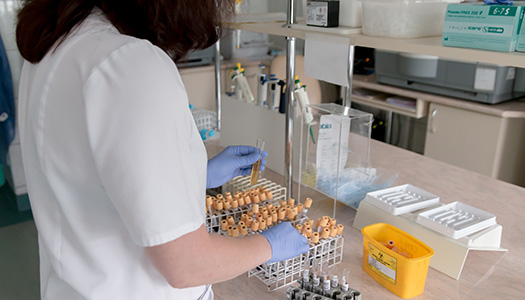The homoeopathic prescription, similarly to a conventional medical prescription, consists of the homoeopathic remedy to be prescribed based on the homoeopathic case analysis just performed, and the dosage, which in turn consists of potency and frequency of intake.
What is ‘potency’?
Potency basically refers to the strength and depth of effect of a homoeopathic remedy. Potency is expressed in terms of the number of times the remedy has undergone the process of dilution and succussion (as described in The How and What of Homoeopathic Remedies), and the factor of each dilution (1:10, 1:100, or 1:50,000).
Higher potencies are stronger-acting than lower ones, even though they are apparently more diluted (remember that the effect of the homoeopathic remedy is not chemical, so the concentration of the original substance is unimportant to the potency). This counterintuitive fact is proven as valid in everyday clinical practice.
Frequency of intake:
In the case of acute illnesses, homoeopathic remedies are in a frequency proportional to the severity of the condition. For example, a stroke victim will receive a remedy once every minute or two to begin, then once every few minutes, and several times daily in the few days which follow. On the other hand, treating the common cold might require one to three doses per day.
In the case of chronic illnesses, where remedies are used in order to effect a gradual, deep change in the organism over many weeks and months, there are generally two styles of prescription. The first is the “single-dose, wait and watch” approach, whereby a single dose, usually of high potency, is given. Following this the patient’s state is observed for a while without further intake of the remedy.
How is it possible to give a remedy once and then wait for weeks or months with no further action?
The answer to this lies in the fact that the homoeopathic remedy does not cure directly. The effect of the homoeopathic remedy is not like that of a medication, which attempt to cure directly but frequently cause symptomatic relief or suppression of symptoms. The action of the remedy is indirect, whereby it stimulates the organism’s self-healing capabilities.
The action of the homoeopathic remedy is thus like that of a catalyst. Catalysts are used in chemistry to stimulate reactions to progress at a much faster rate than otherwise. Many chemical reactions that take place within seconds with the help of a catalyst would take many thousands of years to occur naturally. Similarly, the homoeopathic remedy accelerates the body’s self-healing capacities . This is why a single dose of a remedy could, under the right circumstances, produce a long-lasting reaction from the organism. This reaction often persists for several weeks to several months before before further dosing is required.
The second approach involves regular (usually daily) dosing using a relatively low potency. This is done in some cases where a high potency might produce too strong an effect, or as a routine way of prescribing which avoids some potential pitfalls of the single-dose approach. For example, stressful circumstances and some other antidoting factors can blunt or even reverse the effects of a single dose, resulting in treatment delays if this is not addressed promptly by redosing once more, a step which usually requires a careful assessment by the homeopath. Another difficulty with the single-dose approach is determining exactly when the effect of the present dose has been exhausted sufficiently to warrant another dose.
On the other hand, the daily approach is frequently more agreeable to patients, many of whom feel uncomfortable with the idea of taking their “medication” only once every few weeks. The approach is also easier to customize to the patient’s particular condition, allowing for increased control of the pace of healing by the homoeopath.
For much of the history of homoeopathy the single-dose approach was dominant in the treatment of chronic disease. But because of the expectations of modern patients, and complicating factors that largely relate to modern living, it is becoming increasingly common to prescribe homeopathic remedies on a simple daily schedule, reserving the single-dose approach for small children (who respond very effectively to remedies) and rural people who live a healthier life under fewer environmental stresses.
Dispensing the remedy
The homoeopathic remedy can be dispensed either in liquid form or in tablet form. The liquid form is based on a water-and-alcohol mixture, whereas the tablet form is made of sucrose or lactose suffused with the homoeopathic remedy.
The choice of format is based sometimes on personal patient considerations, and sometimes on therapeutic considerations. For example, those averse even to the small amount of alcohol found in a daily homoeopathic dose can opt for tablets; children can be give the sweet tablets to encourage intake, or conversely the liquid form to avoid sugar intake; those who are lactose intolerant can opt for sucrose tablets or the liquid form; and so on. In addition, there are subtle differences between the effect of these two formats of the homoeopathic remedy that might also dictate the choice between the two.
Whatever the starting potency, frequency of intake, and physical format — as determined by the homoeopath for each and every patient — the homeopathic remedy is taken over a period of time during which the dosage (potency and frequency of intake) is continually adjusted based on the progress of each individual patient. This homeopathic treatment is not only individualized with respect to the remedy given, but also to the management of the case.






